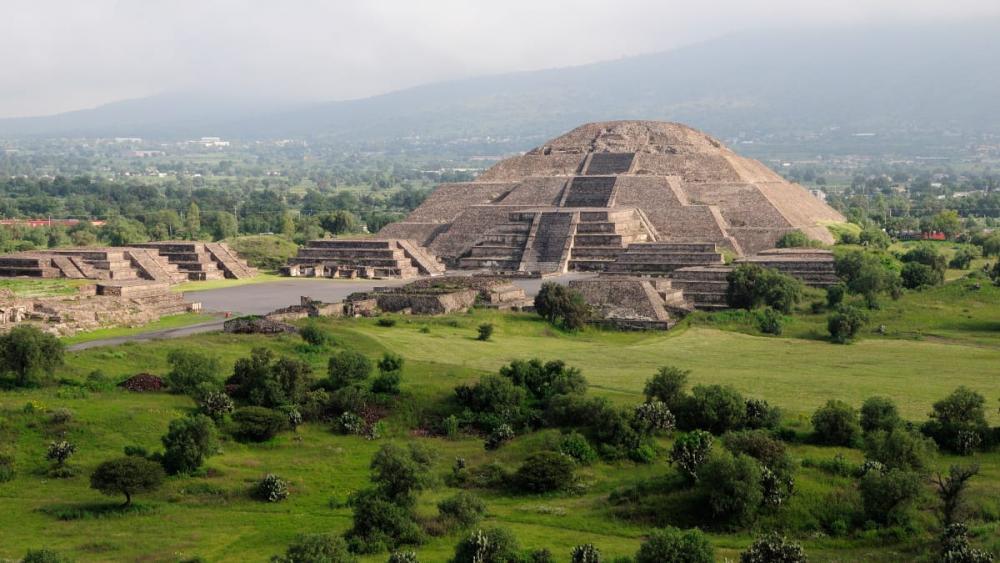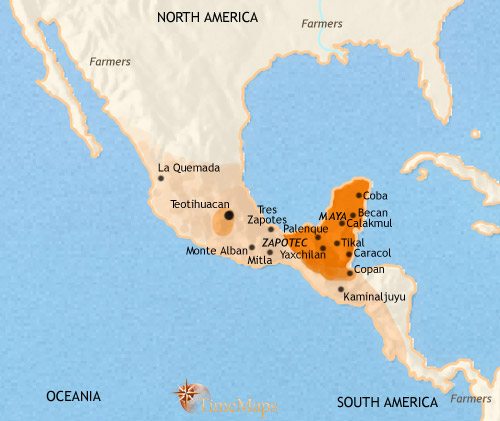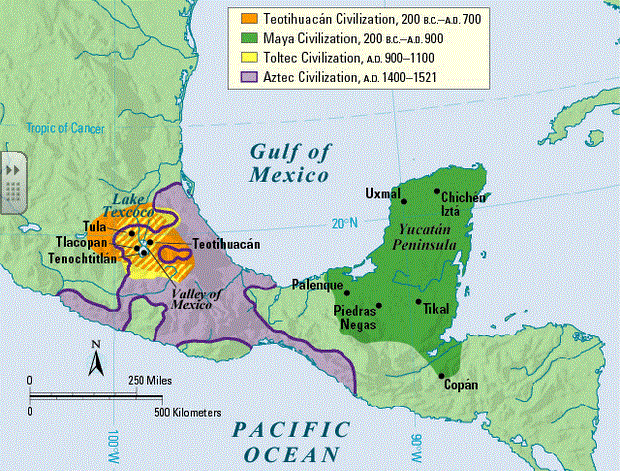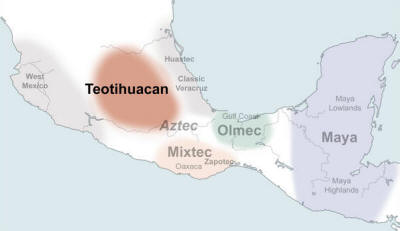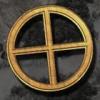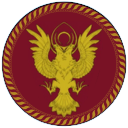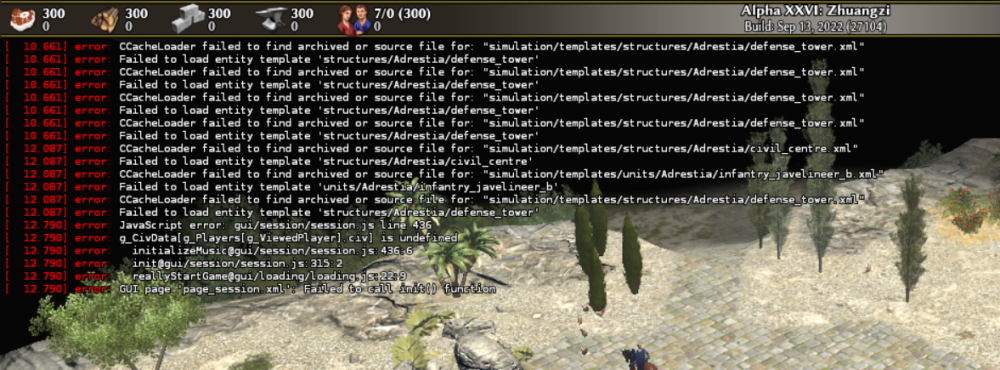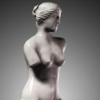Search the Community
Showing results for tags 'faction'.
-
Two things set off the Early from the Late Classic: first, the strong Izapan element still discernible in Early Classic Maya culture, and secondly, the appearance in the middle part of the Early Classic of powerful waves of influence, and almost certainly invaders themselves, from the site of Teotihuacan in central Mexico. This city was founded in the first century BC in a small but fertile valley opening onto the northeast side of the Valley of Mexico. On the eve of its destruction at the hands of unknown peoples, at the end of the sixth or beginning of the seventh century AD, it covered an area of over 5 sq. miles (13 sq. km) and may have had, according to George Cowgill, a preeminent expert on the site, a population of some 85,000 people living in over 2,300 apartment compounds. To fill it, Teotihuacan’s ruthless early rulers virtually depopulated smaller towns and villages in the Valley of Mexico. It was, in short, the greatest city ever seen in the Pre-Columbian New World. Teotihuacan is noted for the regularity of its two crisscrossing great avenues, for its Pyramids of the Sun and Moon, and for the delicacy and sophistication of the paintings which graced the walls of its luxurious palaces. In these murals and elsewhere, the art of the great city is permeated with war symbolism, and there can be little doubt that war and conquest were major concerns to its rulers. Teotihuacan fighting men were armed with atlatl-propelled darts and rectangular shields, and bore round, decorated, pyrite mosaic mirrors on their backs; with their eyes sometimes partly hidden by white shell “goggles,” and their feather headdresses, they must have been terrifying figures to their opponents. At the very heart of the city, facing the main north–south avenue, is the massive Ciudadela (“citadel”), in all likelihood the compound housing the royal palace. Within the Ciudadela itself is the stepped, stone-faced temple-pyramid known as the Temple of the Feathered Serpent (TFS), one of the single most important buildings of ancient Mesoamerica, and apparently well known to the distant Maya right through the end of the Classic. When the TFS was dedicated c. AD 200, at least 200 individuals were sacrificed in its honor. Study of their bone chemistry reveals that not a few are certain to have been foreigners. All were attired as Teotihuacan warriors, with obsidian-tipped darts and back mirrors, and some had collars strung with imitation human jawbones. On the facade and balustrades of the TFS are multiple figures of the Feathered Serpent, an early form of the later Aztec god Quetzalcoatl (patron god of the priesthood) and a figure that may, according to Karl Taube, have originated among the Maya. Alternating with these figures is the head of another supernatural ophidian, with retroussé snout covered with rectangular platelets representing jade, and cut shell goggles placed in front of a stylized headdress in the shape of the Mexican sign for “year.” Taube has conclusively demonstrated this to be a War Serpent, a potent symbol wherever Teotihuacan influence was felt in Mesoamerica – and, in fact, long after the fall of Teotihuacan. Such martial symbolism extended even to the Teotihuacan prototype of the rain deity Tlaloc who, fitted with his characteristic “goggles” and year-sign, also functioned as a war god. That the Teotihuacan empire prefigured that of the Aztecs is vividly attested at the site of Los Horcones, Chiapas, Mexico, studied by Claudia García-Des Lauriers of California State Polytechnic, Pomona. Situated near a spectacular hill, the city lies on the very edge of the great chocolate-producing area known to the Aztecs as the Xoconochco. The southern part of Los Horcones is a dead ringer for the complex composed of the Pyramid of the Moon and the Avenue of the Dead at Teotihuacan, and artifacts and monuments point to a direct Teotihuacan presence in the region. It is hard to believe that the Aztecs were not the imitators here, and that Teotihuacan was the first to interest itself in the cacao plantations and trade routes of the region. The contact did not stop there, but extended to what may be a Teotihuacan colony at Montana, Guatemala. This settlement, surrounded by others like it within a 3 mile (5 km) radius, is endowed with magnificent incense burners, portrait figurines, and an enigmatic square object known to specialists as candeleros or “candle holders,” though their function is not known. And Montana was not alone. In 1969 tractors plowing the fields in the Tiquisate region of the Pacific coastal plain of Guatemala, an area located southwest of Lake Atitlan that is covered with ancient (and untested) mounds, unearthed rich tombs and caches containing a total of over 1,000 ceramic objects. These have been examined by Nicholas Hellmuth of the Foundation for Latin American Archaeological Research; the collection consists of elaborate two-piece censers (according to Karl Taube symbolizing the souls of dead warriors), slab-legged tripod cylinders, hollow mold-made figures, and other objects, all in Teotihuacan style. Numerous finds of fired clay molds suggest that these were mass-produced from Teotihuacan prototypes by military-merchant groups intruding from central Mexico during the last half of the Early Classic. Contacts must have been intense and conducted at the highest levels. Taube has detected Maya-style ceramics at Teotihuacan, some made locally, perhaps in an ethnic enclave at the city. Legible Maya glyphs from murals in the Tetitla apartment compound at Teotihuacan attest to royal names and rituals of god-impersonation. Very likely, these refer not to mere craftsmen brought from the Maya region, but to dynastic elites. Yet the movement of these people must have been complex. Under the immense Pyramid of the Moon, Saburo Sugiyama and colleagues discovered a burial with three bodies, dating to AD 350–400, accompanied by carved jades and a seated, Maya-like figure of greenstone. The positioning of this figure and the bodies nearby, all buried upright with crossed legs, resembles patterns in tombs at Kaminaljuyu in Highland Guatemala; the date, too, is close to a period of marked contact between Tikal and Teotihuacan-related people. Bone chemistry suggests that at least one of the occupants of the tomb came from the Maya region, but spent much of his life at this important Mexican city.
-
Today, we are proud to announce the first design team dedicated to 0 A.D. Scion Development is a collection of ambitious developers and game enthusiasts who have come together to develop third-party content for Wildfire Games' real-time strategy title. Our group of talented, tight-knit designers donate their free time to development with a common goal in mind: to contribute to the 0 A.D. community and further the limits of the game. After extensive construction of the team's logistic aspects, we are thrilled to announce our debut project, The Rise of the East, introducing a brand new faction to the game: China. As a team, our mission is to deliver quality modifications and scenarios to the game community, all while adhering to a policy of high expectations and strong work ethics. Through our dedication to development, we hope to become an integral part the 0 A.D. community. The Team Rob Kimball is a texture artist from Solana Beach, CA. Mikhail Filimonov is a marketing representative and scenario designer from the Bay Area, CA. Robert Schultz is a 3D modeler from New Jersey. Matthijs de Rijk is a 3D modeler from the Netherlands. Joining the Team At the moment we are open to any person willing to contribute to the team, particularly those with artistic abilities or those who possess some form of experience with Atlas. Obviously, anyone wishing to join must have a genuine passion for mod development and must be able to actively contribute to the team on a regular basis. If you think if you have the mindset, and more importantly the skills to become a part of our team, fill out and post an application in our forums. The form and job descriptions may be found in this thread. Rise of the East The Rise of the East is a modification that strives to bring China as a civilization into the game, meticulously researched to be as historically accurate as possible. In addition to the civilization, we plan to implement a full campaign, featuring recreations of famous historical moments, new random maps, and more. As development progresses, we will periodically update the fans with the latest news, and release promotional media although it will take some time before the entire modification is finished. To commemorate our debut, we've released a small unit pack to give the fans a preview of what is to come, which can be downloaded below. Follow us on our official Twitter for the latest updates and news. Also, be sure to stop by our forum and introduce yourself to the community and the rest of the team. We'd love to hear from you! Downloads Below, you can find a small demo of our progress so far. We've included three infantry units from our Chinese faction in this demo release: Dāo Fú Shǒu (刀斧手, infantry swordsman), Cháng Máo Bīng (长矛兵, infantry spearman) and Nú Shǒu (弩手, infantry archer). We've also released the Bīng Yíng (兵营, military center) so you'll have a building from which to train your three new units. Download Rise of the East Demo Release : Infantry (0.1)
-
I was adding my first faction to the game when I came across a process that I am unfamiliar with. An error stating: "g_CivData[playerState.civ] is undefined" : I do not understand how to "define" a "playerState". Anyone think that they can help me out? Edit: I added a pic of all of the errors I am getting just to give extra details...
-
New proposal. This starting of new cycle. Many factions go through the redesign. Thanks to AIEND @AIEND Can be more differentiated: 1. Like the Huns in Age of Empires 2, no housing is required for population support. 2. Except for the wonders, all buildings can be packaged. 3. The functions of warehouses, barracks, and stables can all be completed by yurts (of course, this building can use the model of the current barracks). 4. Shamans, champions, and battering rams are trained by the big yurt. 5. The corral automatically trains cattle and sheep. 6. The bullock cart for packing the yurt and the bullock cart for storing resources are separated. 7. In addition to hunting and slaughtering animals, Xiongnu's soldiers and women were inefficient at logging, mining for stone and gold and could not farm. But Xiongnu can do these jobs with slaves captured from settled civilizations. 8.Cavalry costs less, infantry only needs archers, spearmen and champion archers.
-
Here we will focus in our first mesoamerican faction. i found more related info to aspects that Tomcelmare request how is the climate of this guys, what they did, etc, some conceptual design, gameplay art. Etc.
-
I like Persia faction though, I have few suggestions to improve gameplay. 1.- Persia and many Empires of the time won battles by numbers more than having a real strategy, so my suggestion is: that basic foot troops, to have maybe less attack and health but be cheaper in order to mass them. The immortales able to be trained in the barracs, cheaper and less effective. link: http://en.wikipedia.org/wiki/Military_history_of_Iran#Achaemenid_Era My base for this are the many wars with greece, 1 hoplite is worth 2 or 3 persian infantry men due the training and the equipment they had. Also It is known that immortals received its name not for beeing "immortals" but if someone was killed he or they were replaced by others. "Herodotus describes the 'Immortals' as being heavy infantry, led by Hydarnes, that were kept constantly at a strength of exactly 10,000 men. He claimed that the unit's name stemmed from the custom that every killed, seriously wounded, or sick member was immediately replaced with a new one, maintaining the numbers and cohesion of the unit" link:http://en.wikipedia.org/wiki/Immortals_(Persian_Empire) 2.-Where is Mardonius? xD I like the actual heroes except Xerxes, but they were all kings while Mardonius was a General a brilliant one. 3.- Scythed Chariots, first were 3 men as far as I know, 2 men where charriots from egypt and where smaller, so my suggestion is that chariots can shot bolts while moving, with a penalty of acuracity, horse archers too, second to be faster than infantry but slower than horsemen, though already, third to be able to cut people in half with the blades (in a way to speak). 2The scythed chariot was pulled by a team of four horses and manned by a crew of up to three men, one driver and two warriors. Theoretically the scythed chariot would plow through infantry lines, cutting combatants in half or at least opening gaps in the line which could be exploited." link: http://en.wikipedia.org/wiki/Scythed_chariot All this maybe difficult and complicated but I and many others really like this game, and really want to aid to improve it.
- 3 replies
-
- persia
- improvement
-
(and 2 more)
Tagged with:
-
Is there a plan to include them in the game? has someone started a topic already?
-
i think that in A16 we should put another faction "thebes", already exists a simple stub but non-playable, i think that er must copy&paste hellenic actors, "with an only change, thebian shields" and about macedonians i think that we can put a technology called "diadochi reforms" the diadochi reforms bring 2 new units: * milita thureos "cheap and weak soldiers" * towered elephants "millitary diadochi symbol"
-
NORMANS Right because I didn't see that there was a relaunch and centuries were cut back, this classifies this mod being very early (dark age) Medieval ages. According to wiki "The Normans played a major political, military, and cultural role in medieval Europe and even the Near East. They were famed for their martial spirit and eventually for their Christian piety. They quickly adopted the Romance language of the land they settled, their dialect becoming known as Norman, Normand or Norman French, an important literary language. The Duchy of Normandy, which they formed by treaty with the French crown, was one of the great fiefs of medieval France. The Normans are famed both for their culture, such as their unique Romanesque architecture, and their musical traditions, as well as for their military accomplishments and innovations. Norman adventurers established a kingdom in Sicily and southern Italy by conquest, and a Norman expedition on behalf of their duke, William the Conqueror, led to the Norman conquest of England. Norman influence spread from these new centres to the crusader states in the Near East when Bohemond I established the Principality of Antioch in the First Crusade, to Scotland, England and Wales in Great Britain and to Ireland." The timeline 1,000 covers is 476 AD / 962 AD the Dutchy of Normandy cuts this thinly because it started 911 A.D. which still makes this faction qualify. The Normans also had knights and played a crucial role in their conquest of England in 1066 which will be considered the second part of 1,000 A.D. Examples: ___________________________________________________________________ Norman Castles:

.thumb.png.ce58cea22940c255f5b0a735d5abee36.png)
